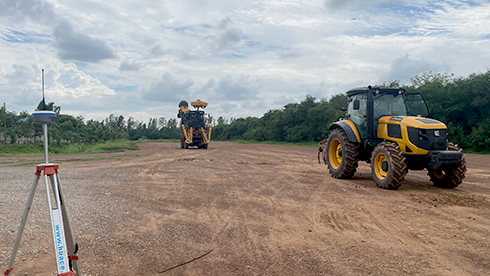In the rapidly evolving landscape of agriculture, effective management of operations is crucial for maximizing productivity and efficiency. One essential aspect of this process is the integration of agricultural GPS guidance systems into existing machinery and equipment. Evaluating the compatibility of these systems is key to ensuring optimal functionality and achieving the desired outcomes in precision farming.
The Importance of Compatibility
When considering agricultural GPS guidance systems for sale, farmers must assess how well they will integrate into their current setups. Compatibility with existing machinery is critical, as it directly impacts how effectively the system can function and enhance operations. A seamless integration allows for the continuity of processes—reducing downtime and minimizing the need for extensive retraining on new equipment.
Moreover, compatible systems ensure that farmers can leverage the investment they have already made in their machinery. Without compatibility, farmers may face increased costs stemming from the need to purchase additional hardware or make significant modifications to existing equipment. Thus, understanding the compatibility of potential GPS guidance systems is a vital step towards efficient and cost-effective farm management.
Key Factors to Consider
Several factors play a role in determining the compatibility of agricultural GPS guidance systems with existing equipment. Firstly, farmers should consider the connectivity options available within their machinery. Many modern agricultural machines come equipped with advanced interfaces that support integration with GPS technology. Farmers must verify whether the GPS system they are interested in can communicate effectively with these interfaces.
Secondly, assessments should include the power requirements of the GPS guidance system. Ensuring that the system does not exceed the power capacity of existing machinery is essential for avoiding operational issues. Additionally, any software requirements associated with the GPS guidance system should be taken into account, as outdated software can hinder functionality.
Lastly, looking into the manufacturer’s support and upgrade options can prove beneficial. Systems that offer upgradeable radio protocols, like CHCNAV Agriculture‘s iBase AG, expand compatibility and user possibilities, making it easier to integrate with a wider range of terminals and machinery.
Conclusion
In conclusion, assessing the compatibility of agricultural GPS guidance systems for sale is vital to ensuring optimal functionality and seamless integration with existing machinery. By examining connectivity, power requirements, and manufacturer support, farmers can make informed decisions that maximize the benefits of precision farming. At CHCNAV Agriculture, we are committed to providing solutions that meet the evolving needs of agriculture. Our CHCNAV Agriculture iBase AG serves as a GNSS base station designed for precision agriculture, with upgradeable radio protocols that enhance compatibility across a wide array of terminals. With the right agricultural GPS guidance systems, farmers can achieve improved operational efficiency and better resource management.


